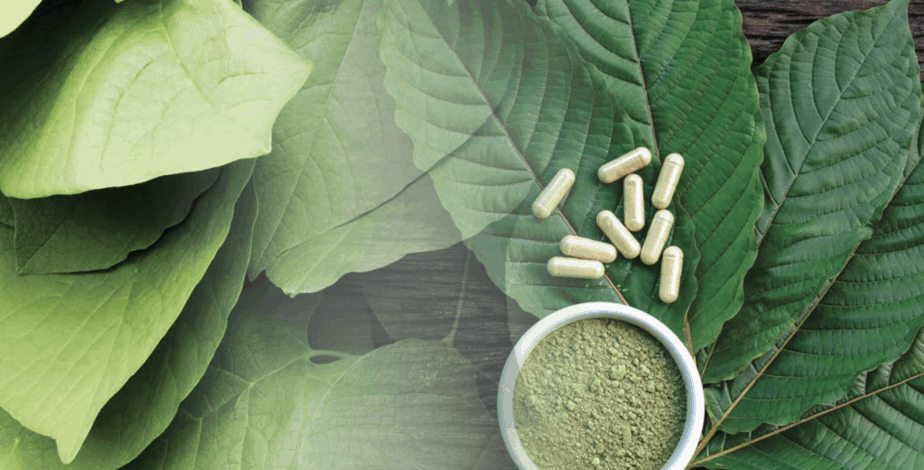
In this article, we explore how long kratom stays in the body and how it affects drug tests. We examine the elements of dose and metabolism that affect kratom elimination.
In addition, we have provided answers to some commonly asked issues concerning the detection of kratom in urine and other bodily fluids. We will concentrate on how long kratom remains in the system in order to help those who desire or are now using kratom understand the subject.
In this article, we emphasize the significance of making judgments based on evidence and the necessity of being up to date with kratom recommendations and literature.
How Long Does Kratom Last in the Body?
The duration that kratom stays in the body can vary based on dosage, frequency of use, metabolism, and strain type. Generally, the effects are felt within 15 to 30 minutes after ingestion and can last from 2 to 6 hours.
Higher doses result in prolonged effects. A small dose (1-2 grams) might last for about 2-3 hours, while a larger dose (5-10 grams) can extend effects up to 5-6 hours. Regular users may experience shorter durations due to increased tolerance.
An individual’s metabolic rate significantly influences how quickly kratom is processed and eliminated. Those with faster metabolisms may have shorter-lived effects. Different strains also vary in duration; Red Bali tends to last longer, while White Maeng Da has a shorter effect span.
The metabolites of Kratom, which include mitragynine and 7-hydroxymitragynine, can also be found in body fluids at different times of use. It can take up to 5-7 days in the urine, around one day in the blood, and up to three months in hair, although hair tests are less frequent.
Understanding these factors helps users manage kratom intake effectively. New users should start with lower doses to gauge duration and intensity, and those subject to drug tests should be aware of detection windows. Overall, factors like dosage, use frequency, metabolism, and strain impact how long kratom lasts in the body. When it comes to kratom, Happy Go Leafy offers premium quality kratom products for your wellness journey.
What Are the Health Benefits of Kratom?
Enhanced Energy
Another important reason is that kratom is popular for giving an individual energy. The lower quantities of kratom have been known to produce a sensation similar to the caffeine, in terms of an energy lift. This is especially useful for the people who require more energy to go through the day or for those who suffer from fatigue disorder. The leaves of the kratom plant contain alkaloids that help to boost the metabolic activities of the body hence enhancing production of energy.
Mood Improvement
Kratom also has the ability to uplift one’s mood. A large number of users have claimed to experience an improved mood and general happiness after taking kratom. The constituents in kratom that are most likely to produce an effect are the alkaloids, and they work by binding to the opioid receptors of the brain, which results in the release of endorphins and serotonin. These hormones make people feel good. This makes kratom useful in the management of depression and anxiety symptoms.
Pain Relief
Kratom is also used to treat pain. Mitragynine and another alkaloid, 7-hydroxymitragynine, which are the two main bioactive alkaloids of kratom interact with the brain and other systems in the body to anesthetize pain receptors and aid in the mitigation or end of chronic pain, arthritis, and muscle pain. It thus makes it an herbal remedy that is often used as a substitute for chemical drugs which come with several implications.
Anxiety and Stress Reduction
This also makes kratom equally useful in handling anxiety and stress-related situations. It has the potential to reduce the tension of the mind and also the body within the shortest time ever possible. Kratom can be considered safe and effective for treating social anxiety or other anxiety disorders because it has been found to contain a sedating effect without arousing the feeling of tiredness common to other treatments.
Improved Focus and Concentration
Besides, the use of kratom can also improve aspects of cognition, including attention and focus. This is quite beneficial for those who are required to be awake and focused for a long time. The stimulatory effects of kratom enable the enhancement of alertness and concentration, hence increasing the efficiency of work.
Sleeping pills and insomnia cure
Though kratom in small amounts acts as a stimulant, in large quantities, it acts as a sedative and can be used to induce sleep. For insomniacs or people who have other sleep-related problems, kratom can assist in the process of falling asleep and help to relax. It also helps in pain relief and decreases anxiety, which also results to enhanced sleep quality.
Does Kratom Show Up on a Drug Test?
It contains chemical compounds such as mitragynine and 7-hydroxymitragynine. Kratom has recently emerged and has been used for several purposes, and these compounds pose a problem for people preparing for drug tests.
The standard tests that are used in places like workplaces rarely screen for kratom. These tests often involve the detection of particular substances such as THC, opioids, cocaine, amphetamine, and benzodiazepine. According to these typical panels, therefore, if a person is exposed only to these panels, there is a possibility that the use of kratom will not be noticed.
Yet, certain tests can be conducted in order to verify the presence of mitragynine and 7-hydroxymitragynine in the body. These specific tests are less popular and more likely to be applied in legal or medical settings. They assume that the test focuses on identifying kratoms or the metabolites of kratoms.
In that case, it can tell the substance present in the urine for 5 to 7 days after the last use, depending on the regularity of the intake and the quantity consumed. Blood analysis can identify kratom in the bloodstream within the next 24 hours after consumption, while hair analysis may indicate use in the last three months. However, this type of screening is rare.
What Factors Affect Kratom Duration?
Method of Consumption
Kratom use, however, varies greatly regarding the way it is ingested, which in turn affects the time it takes before experiencing the effects of the drug. For instance, when one takes kratom capsules, the effects are slower to kick in but last longer compared to when one chew on the kratom leaves or extracts and washes them down with water.
Though it is known to have a bitter taste, kratom leaves can be boiled to make tea, which can give quicker results but also wear off faster.
Individual Metabolism
Kratom has different durations in an individual’s system in relation to the rate at which they metabolize. Due to its short half-life, users with high metabolism rates will break down and eliminate kratom faster, giving them shorter durations of its effects.
On the other hand, patients with a slow metabolism rate will be required to take a longer time to experience the effects as the active compounds in the drug will take longer to metabolize in their body system.
Body Weight and Composition
The body weight and composition of an individual also greatly influence the effects that kratom has on the body. Somehow, overweight persons or those with high body fat content may experience that kratom has a reduced intensity but a longer duration of action. This is because the active ingredients in kratom can be sequestered within the body fat and be gradually released into the bloodstream.
Food and Nutrition
Kratom is known to be effective, and the duration of its use depends on whether it is taken when the stomach is empty or not. Thus, when kratom is taken without food, it has a quicker reaction time and produces a more intense effect, though the duration of the effect is shorter.
When taken with food, especially with high-fat content, it WILL lead to a slower uptake into the system. Thus, the effects will be felt later but WILL last longer than when taken on an empty stomach. Also, some foods can influence the activity of the alkaloids contained in kratom.
Hydration Levels
This is because the levels of hydration also influence the metabolism of kratom and the overall experience. Hydration is important because it is the only way the body can effectively metabolize substances.
Dehydration can cause a decrease in metabolism, which might lead to the prolonged effects of kratom. However, taking a lot of fluids will assist in regulating the normal functioning of the body, hence allowing one to determine the time it takes for kratom effects.
How Long Does Kratom Stay in Your Blood?
Kratom is an evergreen tree belonging to the Rubiaceae family; the active compounds attributed to kratom’s effects are mitragynine and 7-hydroxymitragynine. It is widely believed that kratom may be identified in the bloodstream for one day after consumption.
This short detection window is due to how the body metabolizes and eliminates these compounds. However, for heavy or frequent users, traces may linger slightly longer.
Several factors influence this duration. Higher doses of kratom extend its detectability in the blood, with larger doses traceable for slightly more than 24 hours. Regular use can lead to a buildup of alkaloids, making kratom detectable for up to 48 hours. Individual metabolism, influenced by age, liver function, and overall health, plays a crucial role; faster metabolisms eliminate kratom more quickly.
This is because kratom’s alkaloids are fat soluble and are therefore deposited in fat tissues where they can take more time to be cleared from the system. It is also important to drink plenty of water and consume the right kind of food to facilitate quick elimination; on the other hand, lack of water and an improper diet may cause constipation.
Blood tests for kratom are not standard in routine drug screening and are only conducted in limited medical or forensic Contexts.
Most standard drug panels do not include kratom, focusing on substances like opioids and THC. Understanding these factors helps manage intake and anticipate detection timelines.
How Long Does Kratom Stay in Your Urine?
With two major active components in Kratom, which are mitragynine and 7-hydroxymitragynine, Kratom’s presence can easily be identified in the patient’s urine for some amount of time due to the following factors. In general, positive results for the presence of kratom can often be identified in urine samples within 5-7 days since the last consumption.
However, this should also be understood in the context of the dosages taken, frequency, metabolism, and the overall health status of the person consuming cannabis.
Higher doses and frequent use can extend the detection window. For instance, someone who consumes large quantities of kratom regularly may find it detectable in their urine for the full seven days or even slightly longer. Conversely, occasional users might clear kratom from their system more quickly.
Individual metabolism plays a significant role, with faster metabolisms rapidly processing and eliminating kratom. Age, liver function, and overall health influence this process. Additionally, body composition impacts detection duration, as kratom’s alkaloids can be stored in fatty tissues, leading to prolonged release into the bloodstream and subsequently into the urine.
While urine tests for kratom are not standard in most routine drug screenings, specialized tests can detect its presence if required. Understanding these factors can help manage kratom use and anticipate potential detection in urine tests.
Conclusion
Understanding how long kratom stays in your system is essential for users managing their intake or facing drug tests—factors like metabolism, dosage, and strain type influence kratom’s duration in the body. While standard drug panels often don’t include kratom, specialized tests can detect it in urine and blood.
This article provides evidence-based insights into kratom’s duration, health benefits, and detection methods. By offering practical guidance and emphasizing informed decision-making, it empowers users to use kratom responsibly. Whether seeking pain relief, mood enhancement, or improved focus, knowing kratom’s presence duration helps optimize its benefits while minimizing risks. As kratom’s popularity rises, staying informed and making informed choices become increasingly crucial for safe and responsible use.
FAQs
What is the average duration Kratom stays in your system?
It is not fixed while detecting kratom in the body as it may take some time depending on dosage and dose frequency along with body metabolism. It can be detected in urine tests within 5-7 days and 24 hours in blood tests. It’s not a very common test; a hair test can reveal Kratom use as long as 90 days after the last use.
Is kratom safe to use?
The consumption of kratom is still a matter of discussion when it comes to the safety of its use. There are also those who have noted positive outcomes, including pain management and improved mood, while some users complained of side effects that include nausea, dizziness and addiction. It is recommended that one should not use kratom without the permission of a doctor, and this is especially so if one has health complications or uses other drugs.
Does kratom help with anxiety?
Kratom users have also noted that it is effective in lessening the effects of anxiety as the substance gives the user a euphoria feeling. However, the present state of research in this context is still rather limited, and the effectiveness and safety of kratom in the treatment of anxiety have not been proven conclusively.
Is kratom legal?
Kratom’s legal use depends on country-specific law. In some countries, it is legal, and in some regions, it prohibits its use. In the United States, due to the absence of any legal law banning Kratom-like substances, it’s legal to use; however, several states and municipalities have enacted legislation that prohibits the substance. It is suggested to always beware of the local law before buying and using Kratom.
Does Kratom Get You High?
Since Kratom has psychoactive effects, yes, it can cause high feelings if taken at a higher dose. Some of the known effects are heightened energy, fatigue, and joy. Kratom is made for medicinal use to give users relief, but there is a known concern of abuse and dependency. It also depends on dosage, frequency, user metabolism, and certain health conditions of the user


















Follow Us